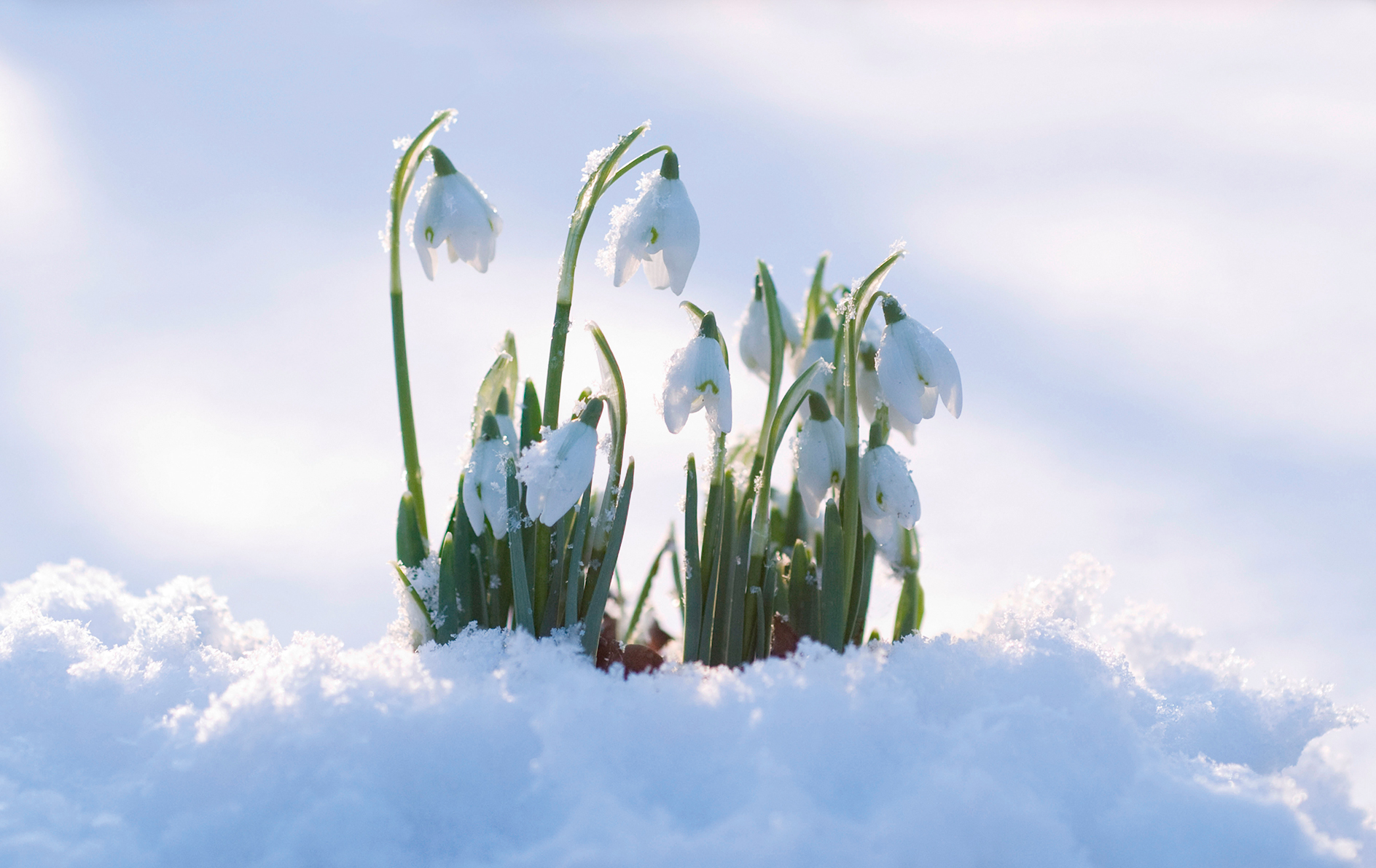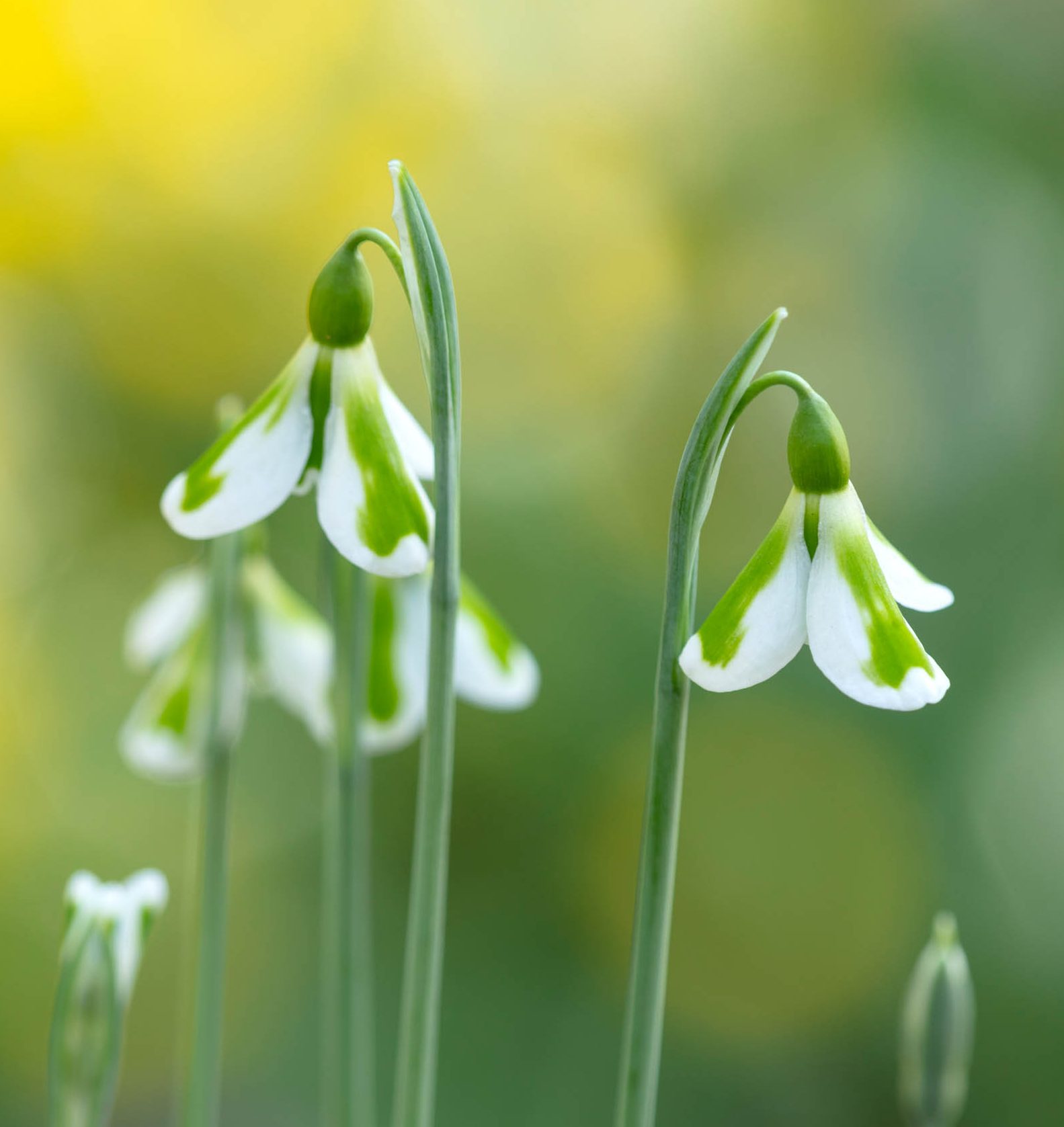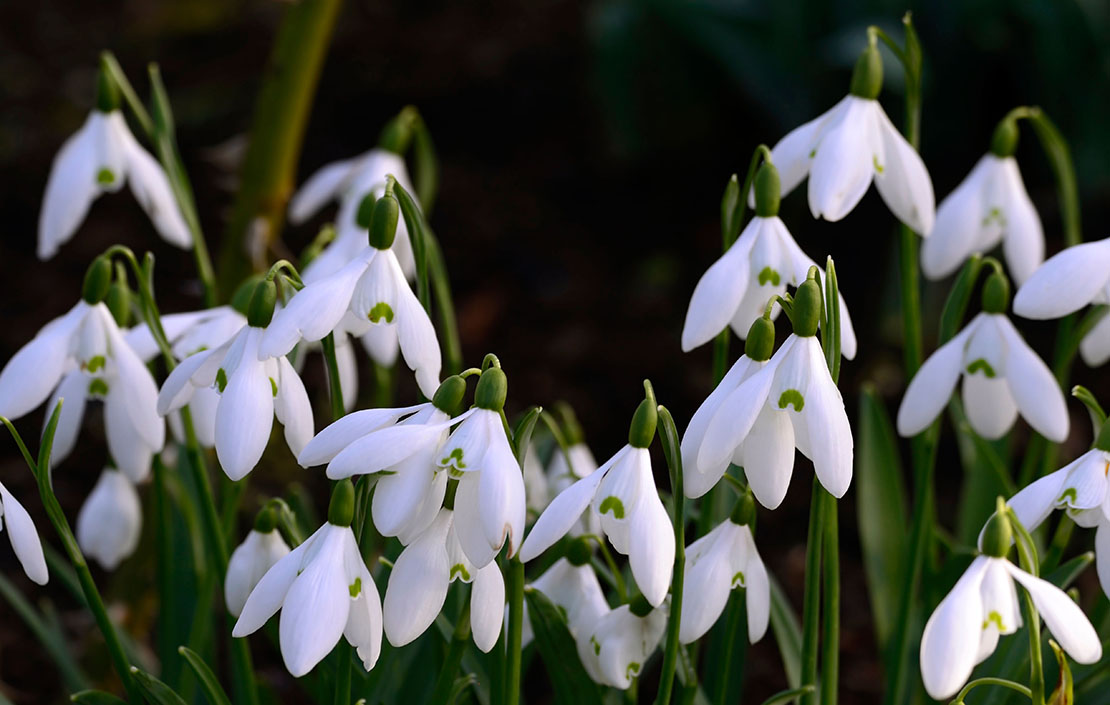In search of a mutant snowdrop
Charles Quest-Ritson tells the tale of a snowdrop that proved a painfully elusive wintry delight.


The Book of Ecclesiastes reminds us that for everything there is a season — a time to be born and a time to die. Gardeners know that there is a time to sow and a time to reap.
January is the time to be gloomy. The days may be getting longer, but the frosts are getting harder. Snow disfigures everything it touches. Sixty years ago, we had 14ft snowdrifts along our mile-long drive in Northumberland and there were still unmelted piles of snow at Winchester when I returned to school after the Easter holidays. Don’t be fooled by climate change — bad winters are certainly not a thing of the past. Another one may be lurking just around the corner.
But one learns from them. I made a big mistake 40 years ago when I found an extraordinary clump of snowdrops in a rook-infested woodland in Wiltshire. The flowers were split down the middle, so that each of its two pedicels carried 2½ petals. Schizoid it may have been, but it also had a distinctive delicacy. The farmer said I could dig it up, so I did so. Then I took it home and potted it up. Soft, refreshing rain watered it nicely. A week later, we had a heavy frost, followed by snow. By the time it had melted and the pot had unfrozen, the snowdrops were reduced to slimy mush. Not one bulb survived. I had learned that plants are much hardier in the ground than in pots.
Snow protects the plants that lie beneath it in alpine meadows. It keeps them dry, too, so, when the great thaw begins and snow turns to water, they have several months of accumulated precipitation to start them into growth. The equation doesn’t work in our climate because it is rain, not snow, that pounds our flower borders from November to March. Except in the big freeze of 1963, of course.
Read more:
Curious Questions: Should you bring a snowdrop into the house?
Joe Sharman, the 'King of Snowdrops', and the tale of the most expensive snowdrop ever sold
Exquisite houses, the beauty of Nature, and how to get the most from your life, straight to your inbox.
The trials of collecting snowdrops: 'Is there no love for a Heffalump or a Grumpy?'
I don’t remember much about the summer that followed in 1963. I know the roses did not flower until July and the RHS did a survey of its members. They reported that cistus and ceanothus were common casualties, but rather more plants had survived than they expected. That was our experience, too: the Magnolia grandiflora and Choisya ternata that my grandmother had planted against the wall of the day nursery for winter protection were badly singed, but both managed to produce a few flowers that year, rather later than usual. By 1964, everyone’s garden was back to normal.
I remembered the snowdrops I had so successfully killed off 40 years ago when I met Lord Heseltine’s deputy head gardener in the autumn of 2021. Emma Thick is among our most knowledgeable galanthophiles and I told her how much I’d have enjoyed showing my potful to fellow snowdrop lovers. ‘That’s Charles Quest-Ritson,’ they would say. ‘Rather unusual, in fact, completely schizoid.’ Emma told me that forms and variations can reappear time and again within a population of snowdrops, so I set out to return to Wiltshire to see if it had reoccurred.
The woodland was still there and so were the rooks. Nothing much had changed, although the estate now belongs to the farmer’s grandson, who was as understanding about eccentric horticulturists as Grandpa had been. I searched the steep slopes assiduously, but in vain. There was no sign of my long-lost foundling with its two pedicels and its curious split flowers. I scoured the surface for signs of something different, but to no avail. Every one of those snowdrops had bog-standard flowers.
However, I did notice that some clumps had still to open and asked whether I might be allowed to return a couple of weeks later when the stragglers would be flowering. Perhaps the mutant snowdrop I was looking for would be among them. I even suggested that it could be named after the farmer’s wife, which was a fairly desperate gesture because I had really hoped that it would be called ‘Charles Quest-Ritson’ and bring me fame and renown among knowledgeable galanthophiles. Proper snowdrop lovers now acknowledge more than 2,000 named cultivars, most of them, I confess, completely indistinguishable from each other, at least to my inexpert eye.
The farmer was enthusiastic. So back I came, early in March, after a spell of warmer weather. I started on the steeper slopes where the pale winter sun had barely penetrated. The last of the snowdrops were in flower and I worked my way through them, slowly and methodically, certain that my split- flower snowdrop would reveal itself again. It didn’t, so I went back to the corner where I had originally found it 40 years ago. That was where I had the best chance of finding it again. Backwards and forwards, up and down, in and out of brambles I hunted, as the rooks cawed in mockery.
I never found it. And perhaps I never will. I shall try again, but it is probably lost forever. After all, there is a time for hope, and a time for… what? Gardening, my grandmother remarked, is the triumph of hope over experience.

Credit: Alamy Stock Photo
Curious Questions: Should you bring a snowdrop into the house?
Martin Fone delves into Britain's collective passion for Galanthus and looks at the folklore that surrounds it.

Joe Sharman, the 'King of Snowdrops', and the tale of the most expensive snowdrop ever sold
Joe Sharman started breeding snowdrops before anyone else and, after 10 years of meticulous work, he created the most expensive

The trials of collecting snowdrops: 'Is there no love for a Heffalump or a Grumpy?'
A galanthophile’s work is never done, says Michael Heseltine, as he tells us about his family's floral hobby; collecting snowdrops.
Charles Quest-Ritson is a historian and writer about plants and gardens. His books include The English Garden: A Social History; Gardens of Europe; and Ninfa: The Most Romantic Garden in the World. He is a great enthusiast for roses — he wrote the RHS Encyclopedia of Roses jointly with his wife Brigid and spent five years writing his definitive Climbing Roses of the World (descriptions of 1,6oo varieties!). Food is another passion: he was the first Englishman to qualify as an olive oil taster in accordance with EU norms. He has lectured in five languages and in all six continents except Antarctica, where he missed his chance when his son-in-law was Governor of the Falkland Islands.
